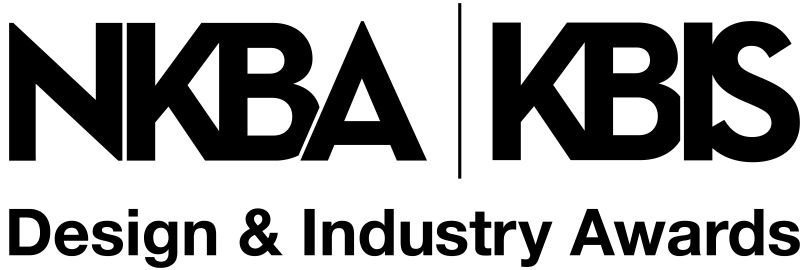This is the first of a series of periodic columns written by designers and contractors as to how their homes were not ready for a short- or long-term challenge that we all may face – personally, through family members or friends or with your clients. A fall, a car accident, a sports injury, a progressive disease – all of these can make activities of daily living very difficult. The home modifications that are usually needed are typically not substantial but can make a huge difference in one’s ability to live in place safely and comfortably when returning home from the hospital or rehab center. These authors are writing from first-hand experiences.
Sheri H. Gold, CKD, ASID, CLIPP, senior sales manager for GE Monogram Appliances, a Haier Co.
Last year, I was in an accident and fell off a stage that was improperly assembled. Up until then, I had never had any physical accidents and was in terrific physical health – going to the gym six days/week and kickboxing at the UFC gym in downtown Chicago four times/week.
All that changed March 2019. I completely shattered my ankle and broke my elbow. Had surgery and now have six permanent pins in my ankle. I was on a scooter for almost six months and then a cane for much longer. It really brought to light how my own living environment was poorly set up for my situation.
I couldn’t stand, so I couldn’t reach my over-the-range microwave, which had been used several times a day until my accident. All my dishes and pantry food items were in my wall cabinet, and my top-mounted freezer with an ice-maker was difficult to access. I ended up moving everything onto my kitchen counter, with clutter everywhere, but it was the only way to access what I needed for several months. I also purchased a Monogram counter microwave, so I had something reachable to use.
As for the bathroom, that was an entire other story. I had to get a shower seat and learn how to maneuver onto it. Plus, I needed a handheld shower placed lower for access. And my large scooter pictured here that was truly a lifesaver was too big to maneuver into the bedroom and bathroom, so we had to transfer it to a knee scooter once inside the apartment.

The flimsy Lucite version in the shower was a sad excuse for a grab bar, and there was no handheld showerhead. Gold managed to incorporate a small shower stool that she had to sit on in her tub for eight months.
While I’ve always had a Living in Place designer focus, this was the first time I had to live it myself. And it’s truly been the most influential changes in my life – physically and emotionally. I also have internalized empathy for others with physical challenges and accessibility issues. I now see problems in this area everywhere I go that I may not have noticed in the past. I’ve worked with local businesses to point out simple and effective ways to make others safer and more comfortable when customers are there. So, it’s come full circle for me as an inclusivity and Living in Place-focused kitchen designer because I’ve lived it myself.
Ebony Stephenson, CLIPP, CAPS, owner of Designs by Ebony LLC in Newport News, Va.
In 2018, at the age of 32, I had to undergo a life-altering surgery. Unfortunately, my body did not respond well to this invasive abdominal procedure, so my recovery time was extended. I was not prepared for how rough my recovery process would be, therefore my home was not accommodating to my new circumstances.
Once I was brought home, that is where the issues started. The paved walkway leading from my driveway to my front door was not level, making it difficult to walk on. The walkway was also not wide enough, prohibiting someone from being able to walk next to me and offer assistance. In retrospect, I would have hired a landscaping team to remove the uneven stone pavers on my front walkway and replace them with a level surface like concrete on a wider walkway.

Even though I had handrails on my stairs, it was still difficult to stand up to walk, and I was forced to crawl up the stairs to my bed. It was difficult to get in my bed because it was too high, and I could not use my abdominal muscles to get in. If I had thought about it ahead of time, I could have set up a temporary sleeping area on the first floor of my home so that I could recover downstairs instead of having to struggle to walk up and down stairs. Another solution would have been to set up a temporary makeshift kitchen in my bedroom with a mini-fridge, microwave and disposable plates, cups and silverware.
Something as simple as having my lights and fans automated or with remotes would have really helped also. A Ring doorbell or security system with cameras set up before surgery would have been nice so that I could feel more secure in my home knowing that if anything happened, I was not able to get up.
Using the restroom became a difficult task, too because it was difficult to sit and stand. Showering was a harder task because I was not able to lift my legs to get in and out of the bathtub. Even raising my arms to reach the handheld shower head was almost impossible. I should have purchased an ADA-removable shower seat so I did not have to stand while showering. I also wish that I had installed better lighting in my bathroom, including a light over the shower; being on so many meds affects your vision.
In the kitchen, making a meal took forever because I was not able to bend down to reach any of the items in my base cabinet. I was also not allowed to lift anything over 5 pounds, so I had to be extra careful. Vacuuming or even sweeping was completely out of the question for months. Living alone and trying to recover from this surgery was way more difficult than I ever expected.
We welcome readers to submit their own stories, and you can do so by emailing [email protected].








